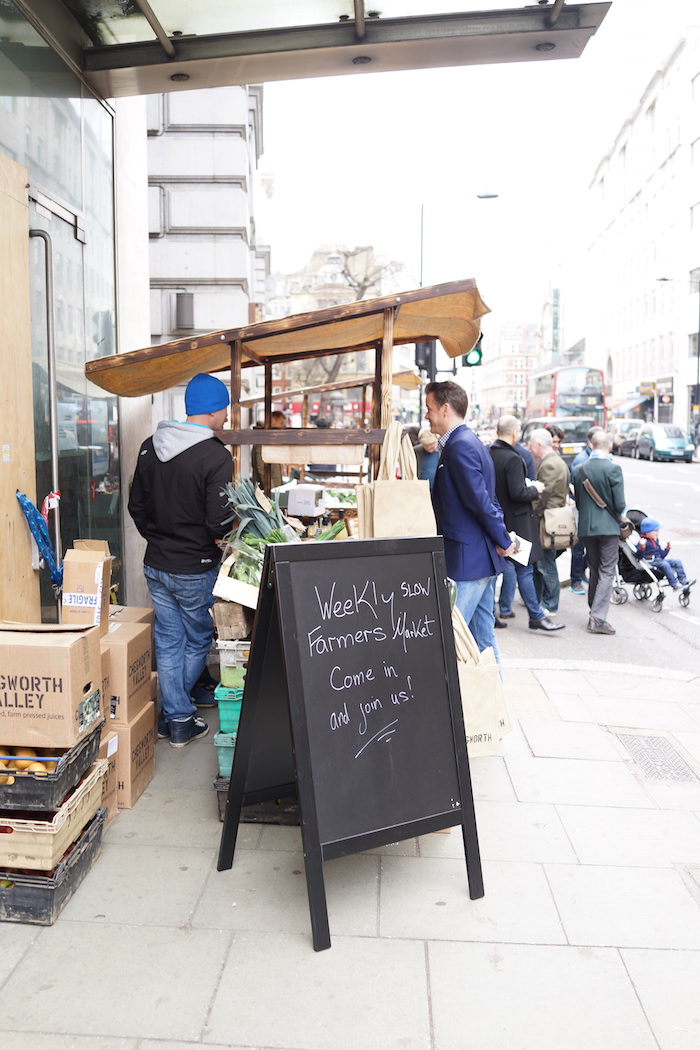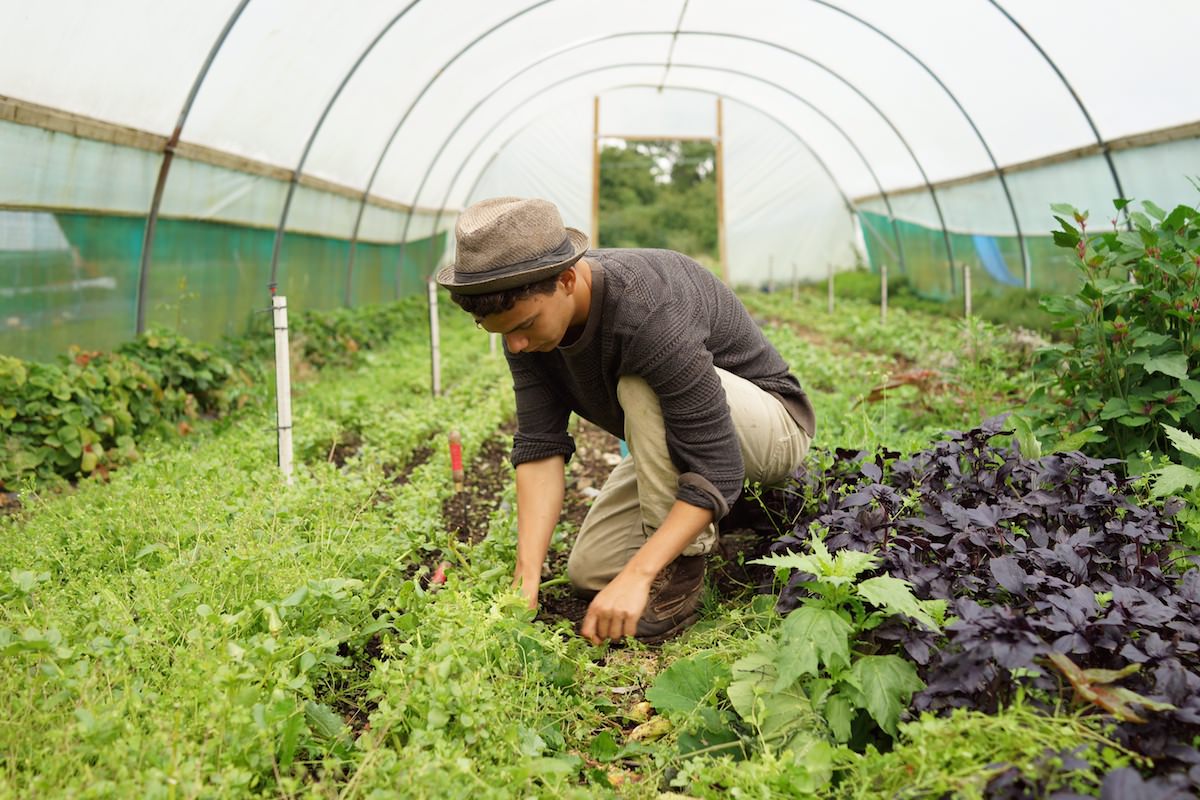Following on from his recent report on Wonky Veg, Fresh Produce Industry Insider Mark Palmer has put together a short guide on how to get the best fruit and vegetables without being lead up the garden path..
I seem to spend a lot of time and effort trying to bring peoples attention to the wrongs of supermarkets, the ploys they use to confuse customers and how they reduce the value to growers of their hard won produce. Given some of the questions that have been posed over the last month or so, I seems a good point to try and be somewhat more positive and using my “insider knowledge” as someone put it recently, to give a guide to how to get the best fruit and vegetables without being lead up the garden path.
Growing your own
Actually “up the garden path” is where we should start! The best fruit and vegetables anyone can obtain are those grown by you in your garden. This comment would not go down well with the industry, but the best, freshest and most nutritious produce is just that. Most of us have access to gardens and there are lots of sources of advice, from TV’s- Gardeners World, online advice, gardening clubs and horticultural magazines. You should not be frightened, just have a go! Start with simple easy win growing, with radishes on your kitchen window, ready in 6 weeks. Once you have the the growing bug, the skies the limit. Once you have tasted fresh picked carrots pulled from the ground, or sweetest of sweetcorn, from the plant, you will never look back. By using cold frames, or greenhouses you can extend the seasons.
“Start with simple easy win growing, with radishes on your kitchen window, ready in 6 weeks. Once you have the the growing bug, the skies the limit.”
However only a few of us are able to stretch the seasons beyond late summer and autumn harvests and have to rely on buying from other sources. Where ever you can try and keep to seasonally grown produce, although this is now far more difficult due to the way the supply chain works now.
Growing your own is, to the relief of the vegetable industry, currently only producing a small amount of the nations fresh produce. Most of us end up buying from supermarkets, around 80% of volumes sold. Greengrocers or home deliveries making up the rest.
“The next best way of getting your 5-a-day is too buy from local farmers and growers, from farm shops, farmers or local markets”
Buying direct from local farmers and growers
The next best way of getting your 5-a-day is too buy from local farmers and growers, from farm shops, farmers or local markets, such as The South Oxford Farmers and Community Market, held weekly, with members from within a 30 mile radius. These type of markets are springing up around the country. Farmers markets in many areas are not selling the fresh produce, as they tend to have become monthly “artisan” sellers with preserves, sausages and handmade soaps predominating.

Organic Box Schemes
Fruit and vegetable box schemes, mainly organic, are also good ways of getting the freshest vegetables, from local suppliers. Some box schemes only use own grown, while many do grow as much as they can and buy in when local is not possible and also supply imported produce. It has to be remembered that many of the staples that we expect to have available today are unable to be grown in the UK. So if you want oranges, bananas, kiwi fruit, sweet potato, blueberries, at any time; broccoli, tomatoes and cucumbers in the winter; then we have to rely on imports. This is a complex issue and one that should be explored in the future.
High Street Greengrocers
If you don’t like box schemes, which can be more expensive, though it is delivered to your door, supporting your local green grocer, rare though they are becoming, would seem a good option. Unfortunately most green grocers use the same or similar supply chains as supermarkets so products are very rarely local or seasonal. There are exceptions and it could be argued supporting our local high street is a very good reason to shop with them. You will get friendly and expert personal service, which is also a reason to use them.
Supermarkets
Finally if you still want the choice and cheapness, most of the time, we have the choice of the supermarket. In my opinion, you do in many ways get what you pay for. Shopping at Waitrose (in the North West – Booths) will give you some very good quality from often smaller suppliers, that are receiving a fair price for their hard work. They tend to have high standards of visual expectation, so are not good when it comes to waste produce, but quality, taste, ripeness will all be nearer to farm fresh. They do try and work with local suppliers, often because they are not as big, so can have suppliers that are not huge businesses.
The big four, Tesco Morrisons, Sainsburys and ASDA offer unrivalled convenience for our weekly shop and this is why so many customers use them. They have a range of food and non foods that only the biggest online retailers are able to beat. With the expansion of Lidl and Aldi the big four have stiff competition. In general their ranges are smaller, with fewer frills with the in store experience. The fresh produce they offer is also of reduced range and often is the size that is unwanted buy the big four. This can offer better value, for example conference pears in Lidl are the the larger fraction of the crop. But because of their business model the discounter can offer them are lower rate than the “big four” can sell the smaller fruits.
Online Retailers
The final growth area are the two big online retailers, Ocado and Amazon. Ocado partner with Waitrose, Morrisons and in some area trade under their own name.They have been building their business for many years now. They again use the same supply chain principles of the multiples, so have the same issues with freshness, local supplies and lack of seasonality.
The most interesting development this month is Amazon starting the delivery service in limited areas of fresh produce, to Prime members. It is rumoured to be aiming to deliver fresh products within 60 minutes of any order being placed. I would assume the supply lines will be similar to the other multiples. It remains to be seen in the future if they can only achieve cost effective 60 minute deliveries in urban areas, creating further food deserts in rural areas.
Food Waste
Reduction of the levels of waste produce, a common theme in my blogs, are only attained in one of two ways:
Firstly multiple retailers must put more produce that is not quite perfect into the main packs and carry out a re-education of customers away from perfect produce.
Secondly we must remember – customers is king. We should use information available to us and our latent instincts to purchase from the best source we can and that is as near to or from the grower.
In this way we can have the direct relationship with the real people who care for our food.
A version of this story first appeared in Systems 4 Food



